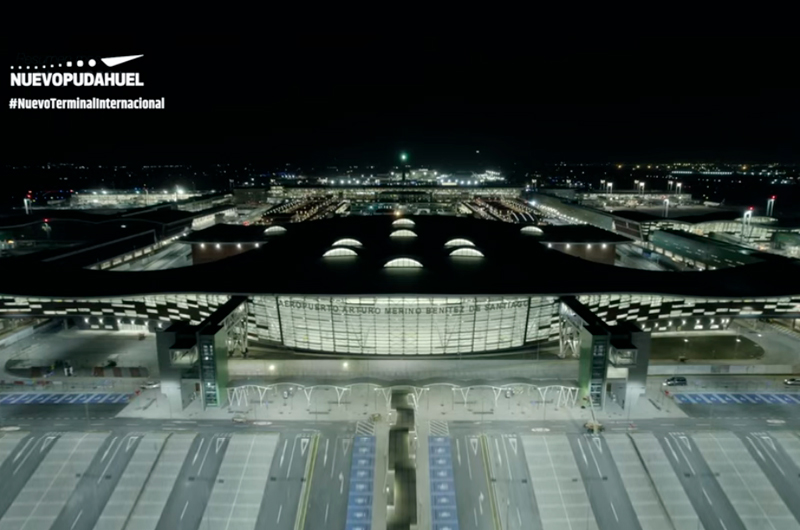Source: Infrastructure Policy Council
With the new Terminal 2, Santiago de Chile’s International Airport will double its capacity from 15 to 30 million passengers per year, with first-rate facilities of more than 200 thousand square metres. It will consist of a “central processor” building where passengers arrive to document their flight and the departure of those who arrive; from there they will be distributed to 4 breakwaters with last waiting rooms with direct corridors to the planes that quadruple from 18 to 67, with a total of 76 boarding gates.
The previous terminal, now called Terminal 1, will be completely remodeled and will be used for domestic flights; although it will be interconnected with the new International Terminal. Both terminals will be equipped with state-of-the-art technology including free Wi-Fi within the facilities.
It will also have security technologies such as state-of-the-art scanning equipment; radio frequency labels for arrival luggage for automated control; closed circuit television for surveillance and monitoring control system.
The total parking lot will have a capacity of 3,730 vehicles in two buildings with 3 levels and 2 surface parking lots, which increases the existing capacity by 50%; The use of electric approach vehicles will also be implemented for people who require assistance, and rolling paths 4 kilometres long.
The airport will also have a greater commercial offer of all kinds, including recognized international brands; greater comfort in waiting rooms; new VIP lounges for airlines and a greater offer of food of all kinds and budgets.
Last but not least, the new building will be friendly to the environment as it has measures to help reduce the environmental impact; including a photovoltaic generation plant that will reduce 500 tons of CO2 per year. Green areas have also been increased, 20,000 trees were planted, as well as a new recycling program.
Nuevo Pudahuel’s Communications Deputy Manager, Branko Karlesi, explained:
We are proud to build, operate, attract new airlines and open new routes; in an unpublished work of the public-private alliance in the aviation sector where the Airports Directorate (DAP), Tourism Undersecretariat, Civil Aeronautics Directorate (DGAC), Invest Chile and the Civil Aeronautics Board (JAC) work together so you can fly cheaper and to more places”.
The opening date is scheduled for the second half of the year, after several operational tests of the terminal have been successfully completed; with which Santiago de Chile will have a first-level airport with sufficient capacity to adequately meet the demand for the years to come.

